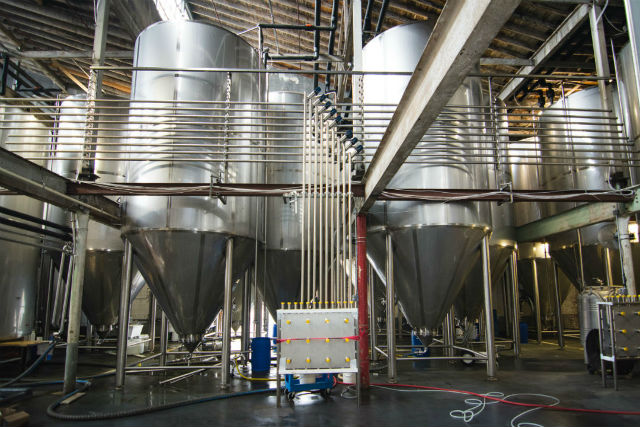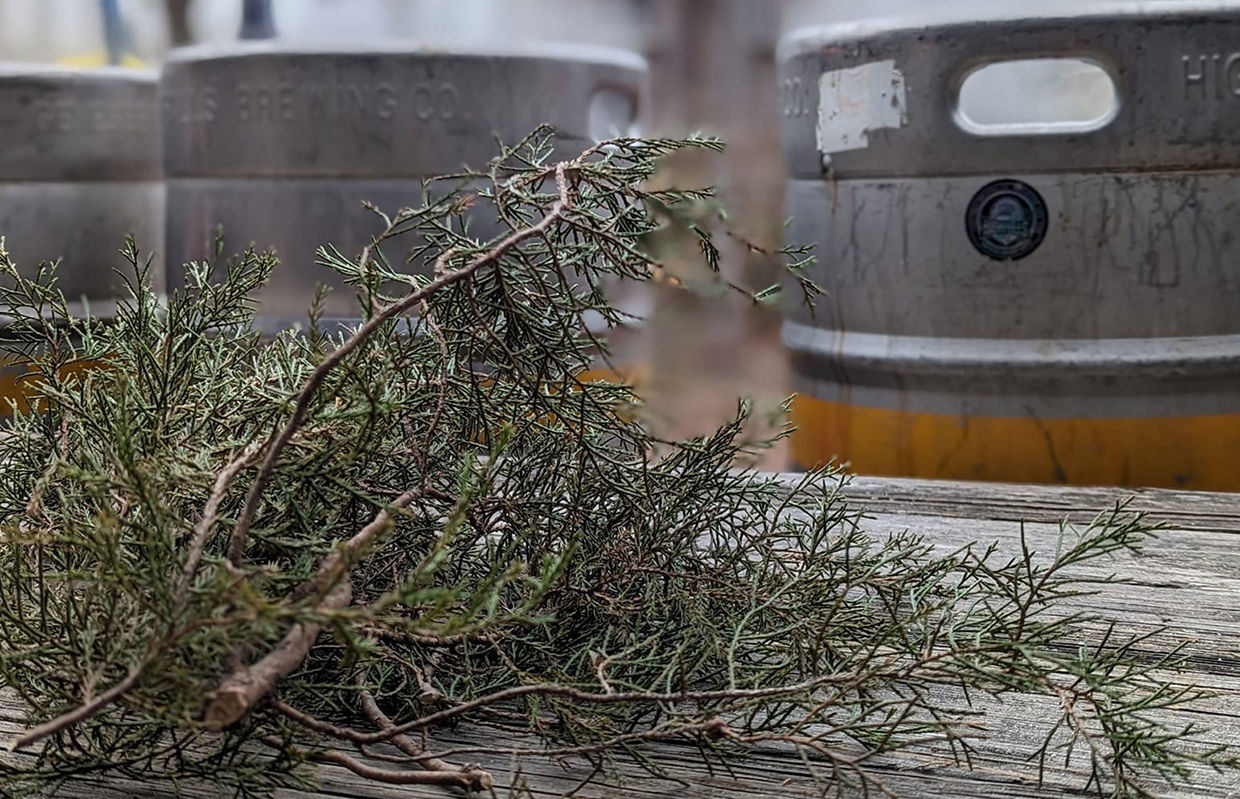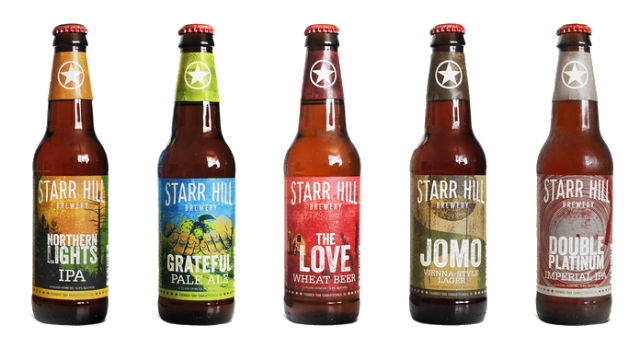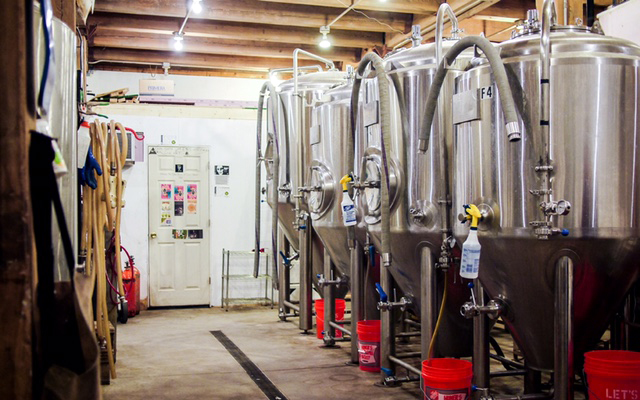
It’s not often that you hear of a small brewery opening up with all the luxuries, like matching fermentors.
That usually takes time, money, and most importantly, confidence in working with one manufacturer.
For both Rogue Ales and Rhinegeist Brewery, starting with what they could start with was essential to its growth.
“Originally we bought whatever we could find,” said Joel Shields, the Associate Master Brewer for Rogue, “but now we buy the ones we love, which are (JV Northwest). They make high quality vessels and are local.”
When Cole Hackbarth joined Rhinegeist in early 2015 as the brewery’s operations manager, he hit the ground running after working in Los Angeles as the Head Brewer for Golden Road along with a stint at Full Sail more than a decade ago. What he saw was a mish-mash of tanks, and for good reason. The brewery was seeing explosive growth and was taking whatever tank they could to help fill orders.
“Some were off the shelf from your standard stainless manufacturers,” Hackbarth said. “Some were custom made but it was kind of whatever you could get quickly.”
As the brewery transitioned from a 20-barrel JVNW brewhouse to a 60-barrel automated BrauKon, the collection of 40-bbl up to 200-bll tanks from various manufacturers was streamlined down to two. One could help fill orders quickly, the other, Sprinkman, was the one that the brewery became most connected with. So much so that now there is a standing order for the last four years of four new 240-bbl tanks every six months. “We like the design of their tanks, the quality is really high and … we just kind of keep bringing them in,” he said. “And then some of the brite tanks we’ve actually sized them up to the 280-bbl brites for cider production.”
“We like the design of their tanks, the quality is really high and … we just kind of keep bringing them in,” he said. “And then some of the brite tanks we’ve actually sized them up to the 280-bbl brites for cider production.”
Cold Spring Brewing, which also produces Third Street Brewhouse beers, has 22 450-bbl and two 150-bbl Cylindro Conical fermenters. When Cold Spring first opened in 1874, the tanks were made of wood. At some point, glass-lined steel horizontal tanks were installed, pointed out Karl Schmitz, the brewery’s manager.
In 2012, when they developed and built Third Street Brewhouse, they added 12 cylindroconical FVs. The brewery added another dozen in 2015 to get them entirely out of their heritage cellars and into conical tanks.
“The new tanks give us more precise control over fermentation temperatures and make CIP a breeze,” Schmitz said. “We wanted to modernize our systems, plain and simple. All of our new FVs were built by DCI tanks in St. Cloud, which is only about fifteen miles from the brewery.
“We felt strongly about using a local company, and we’ve been so happy with how everything has performed since Day One. DCI builds wonderful tanks and their proximity to the brewery makes shipping easy — and because they’re so close, we’ve had a great experience on the customer service end.”
The locality and service echos true for Rogue and JVNW.
“JVNW makes a high-quality product, they’re local, and we have a great relationship with them,” Shields explained. “We also love that these vessels are easy to clean and have no shadow. They also have six inches of dry-hop ports on top, which makes it easier than the standard 2-4 inches. We also have a custom yeast port [fabricated].”
Hackbarth had dry-hop ports on the original order of 240s for Rhinegeist, but he noted that they have gotten rid of those because they were unnecessary.
“With dry hopping being a huge part of our portfolio, having racking arms is really nice even on those big tanks,” he said. “It would be really difficult to do really hoppy beer without racking arms. So that’s kind of a big thing [for us to have]. Because they’re so tall, we can’t do the traditional ‘chuck and duck’ method of dry hopping where you just dump dry hops in the top.
“A few of our tanks had hop ports on them, but we took those off just because we’re not going to send our guys 30 feet in the air with 400 pounds of hops to dump them in the top. So we now do a re-circulation through a smaller 8-bbl tank. We circulate the beer out of the fermenters through that and then push it all back in which works great for us. We actually have better aroma extraction and better utilization on our dry hops from that.”
Rhinegeist also oversized the brite tanks so that we can do ciders and things that have higher yields and higher volumes. They originally had dual temperature probes and cooling zones installed as well.
“We now just have one temperature probe to control all the cooling zones because we don’t ever under fill our tanks, they are always all the way full,” Hackbarth said with a laugh. “So it’s just unnecessary to have multiple temperature probes and multiple controls. So we have streamlined and made tanks more efficient and a little simpler just so they’re not too much work maintenance-wise for controls.
Cold Spring tanks have three cooling zones and are about 40 feet tall each.
“The zoned cooling is excellent and solves a lot of challenges you’d typically see with tanks this size,” Schmitz said. “Tall tanks have a tendency to get warmer at the top and cooler at the bottom, which means you may only need to cool the top third of the tank to control the temperature at a given time. When we did the cellar expansion, we were very strategic in where we placed our tanks. We changed some of the locations of the cooling zones to fit our needs better. Our current cellar set up limited us to narrow, tall tanks.
“When we expand into future cellars, I’d like to use wider tanks that provide us with more surface area and a lower hydrostatic pressure.”
Most of the changes for Pfriem Family Brewers has been to accommodate for the size increases the brewery has seen. Brewmaster and co-founder Josh Pfriem said more glycol throughput and two thermocouples instead of one have been added to their standard stainless uni-tanks.
“We rely on very credible producers for our equipment. We want to work with established producers that are known for quality and meeting deadlines,” Pfriem noted. “We have a standard blueprint of where we like everything to be located on the tank and we want to work with manufactures that will accommodate.”
Shields said hairline cracks often appear in the tank from all of the heating and cooling that happens during the brewing process.
“We fix those by welding them shut,” he said. “In the last 10-20 years, we’ve only had one or two major cracks in the tanks.”
Although stainless steel repair is minimal, it helps to make sure a brewery has a good CIP program to keep maintenance pretty minimal.
Cold Spring tanks have a combination vent/CIP line and split to either the spray device or an open vent line right at the tank. The vent line has a spring-loaded check valve to direct most CIP flow into the spray device while still allowing the short vent line to be cleaned.
“One of the most common issues we’ve seen is that when the spring fails – which is inevitable – the path of least resistance is an open pipe instead of the spray device,” Schmitz said. “This makes the CIP completely ineffective. To solve this, we put the springs on an annual [check] and change them out periodically. Other than that, we conduct regular maintenance on all the valves in the brewery to keep everything sanitary and working properly at all times.”
Hackbarth pointed out changing gaskets is important, mentioning that gaskets from one supplier is one aspect to think about.
“That’s the one thing about having a dedicated supplier is you better access to custom gaskets and things like that whereas if you pull in tanks from random vendors and just kind of drop them, then you’ve got a source gaskets for all of those random tanks and used tanks can often have outdated parts and gaskets that are hard to find.
“So that’s one thing that is easier about getting new [tanks] and sticking with one vendor is we can stock half a dozen manway gaskets and it’s a piece of cake.”






Be the first to comment